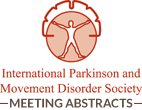
“The discovery of cannabinoid receptors at the beginning of the 1990s, CB1 being cloned in 1990 and CB2 cloned in 1993, and the availability of selective and potent cannabimimetics could only be justified by the existence of endogenous ligands that are capable of binding to them. Thus, the characterisation and cloning of the first cannabinoid receptor (CB1) led to the isolation and characterisation of the first endocannabinoid, arachidonoylethanolamide (AEA), two years later and the subsequent identification of a family of lipid transmitters known as the fatty acid ester 2-arachidonoylglycerol (2-AG). The endogenous cannabinoid system is a complex signalling system that comprises transmembrane endocannabinoid receptors, their endogenous ligands (the endocannabinoids), the specific uptake mechanisms and the enzymatic systems related to their biosynthesis and degradation. The endocannabinoid system has been implicated in a wide diversity of biological processes, in both the central and peripheral nervous systems, including memory, learning, neuronal development, stress and emotions, food intake, energy regulation, peripheral metabolism, and the regulation of hormonal balance through the endocrine system. In this context, this article will review the current knowledge of the therapeutic potential of cannabinoid receptor as a target in Alzheimer’s disease and other less well-known diseases that include, among others, multiple sclerosis, bone metabolism, and Fragile X syndrome. The therapeutic applications will be addressed through the study of cannabinoid agonists acting as single drugs and multi-target drugs highlighting the CB2 receptor agonist.”








